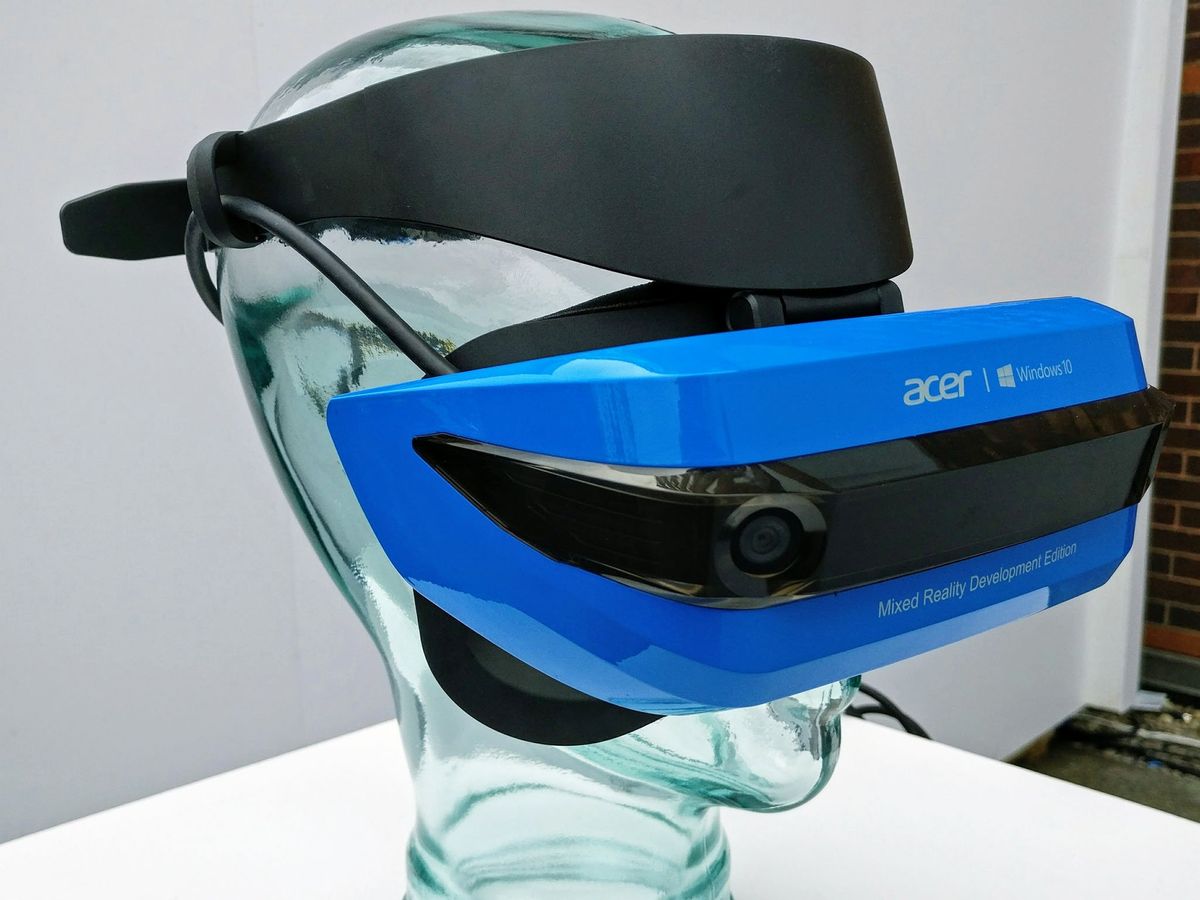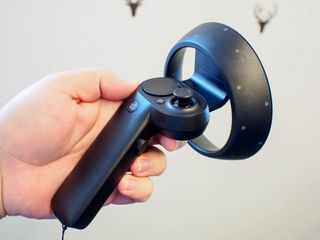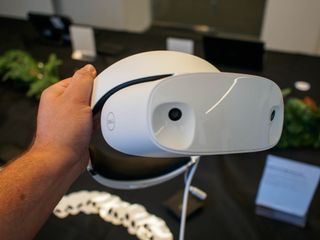SteamVR, Minecraft on Windows Mixed Realty are even more impressive than you think
Can Microsoft's Mixed Reality platform mainstream the virtual? There's a lot to like about it, even if significant questions remain.

Last week, I strolled into the Microsoft flagship store in New York City. The plan was to be briefed on what Microsoft was doing with its Windows Mixed Reality initiative – a catch-all phrase for things spanning from holograms to full-on virtual reality (VR) with occluding headsets.
After learning about the big changes coming this holiday season – including running Mixed Reality on non-premium gaming hardware – I was taken to a room to experience it all myself. It was pretty impressive.
SteamVR is exactly what you expect
Currently, if you want to play any games on SteamVR you either have to have an HTC Vive or Oculus Rift VR kit. While the pricing has come down, the setup is still a bit clumsy – at least compared to Windows Mixed Reality. Moreover, those systems are not interchangeable. While many developers make the games available on both platforms, that's not guaranteed. Additionally, those platforms don't necessarily allow cross-play.
Windows Mixed Reality wants to remove these obstacles. First, pricing is cut down to just $399 for the head-mounted display (HMD) and dual hand-motion controllers. Setup is also easier with just two plugs – HDMI and USB 3.0 – for the PC and no wall sensors. Finally, it doesn't matter if you get a Dell, Lenovo, Acer, or HP headset – they will all play well with each other because it's just Windows.
Back to New York City. Over 30 minutes I tried four games that fall into the Windows Mixed Reality Ultra PC category. The testing rig was my favorite Razer Blade Pro but such crazy hardware is not required, and the games were:
- Space Pirate Trainer by I-Illusions.
- Superhot VR by SUPERHOT Team.
- Arizona Sunshine by Vertigo Games, Jaywalkers Interactive.
- Rec Room by Against Gravity.
All the games utilized the new motion controllers, which are fantastic. With multiple triggers, D-pads, and thumb sticks, they let you navigate, shoot, and move in these games. Once in the game, you can "see" your hands, which for obvious gameplay reasons is important. While there is a learning curve, I imagine building up muscle memory is very doable. There is even a dedicated and familiar Windows key that brings you back to the Windows Mixed Reality "home" at a quick push of the button.

Back to the games. Space Pirate Trainer involves you standing on a platform while battling drone bots attacking you from various angles. In one of your hands is a gun. Reaching behind your back with your non-gun hand lets you grab a shield. From there, it's moving target practice in space with slow-motion effects, dodging, blocking, and returning fire. It is glorious.
Get the Windows Central Newsletter
All the latest news, reviews, and guides for Windows and Xbox diehards.
Superhot VR is a spinoff of the popular console and PC game. Again, using the hand-controllers, you can grab guns, bottles, shuriken, or just throw a punch.
Arizona Sunshine is a zombie game where you explore a vast post-apocalypse world. With the motion controllers, you can shoot zombies, walk around, explore, and fend off various attacks. The pacing was a bit intense but comfortable, too. To load your gun, you physically move your hand and motion controller to your hip to grab your clips. Aiming can be done with a pistol's three-dot sight, which speaks to the accuracy and physics in the game.
Rec Room is described as a "VR social club" free-play multiplayer experience. You can create virtual avatars of yourself, hang with friends, play games, and more. While not quite exciting, the ability to have virtual hangouts is enticing especially when you can go and play paintball, Frisbee, high-five your friends, play basketball or just waste time.
Overall, the games gave a glimpse into a world of VR that has existed for some time with the key difference that this was not on Oculus Rift or HTC Vive. While the games had a few bugs and quirks, I was hooked. This leads me to the Minecraft experience.
Minecraft VR is a whole different experience
Being "an old," I don't quite get the appeal of Microsoft's Minecraft. While I understand it at cerebral level – these are like virtual LEGOs – when it comes to things I want to "play," it's not at the top of my list.
The future Minecraft VR expansion changes this significantly. There are two modes to play the game, and it works even on a basic Ultrabook PC (I played it on the HP Spectre x360). Those two modes are:
- Virtual display – You're in a virtual reality "house" where there's a giant TV you can play Minecraft on.
- Full VR - In this mode, you go into the TV and play Minecraft in full 3D, virtual reality.
The first mode may sound weird if you have never done VR. The idea is in a virtual world you can play Minecraft on a giant display that "feels" like you have a 60-inch TV. This experience is good if you get motion sickness.
Full virtual reality Minecraft is exactly what it sounds like. You walk around the world, and with the HMD and hand controllers, you feel like you are "in" this Minecraft world. It's a bit freaky. It's also awesome, as suddenly I saw Minecraft from a whole new perspective. It felt much more real.

Having said that, at just 60 frames per second (FPS) versus 90 FPS on a high-end machine when combined with some of the jerkiness, I found myself getting a bit sea sick in Minecraft. Nonetheless, it was intriguing, and I can see many avenues of exploration opening up around Minecraft VR.
Windows Mixed Reality has potential
After around 30 minutes of trials and demos of Microsoft's Mixed Reality platform (the build I tried is not yet public even for Windows Insiders), I came away impressed.
It should be no surprise that gaming is the easiest pathway for Microsoft to VR and reaching consumers. What changes this time is that the hardware is becoming easier to setup and more affordable. Microsoft's partners can make sure that someone in a remote, non-U.S. country can get a headset too.

Playing those various games, I can see how people will want to pick one of these VR kits up at the store. For $400, you can get a VR controller and HMD that works on any PC. Nor will you have to worry about cross-platform play – another huge win.
Beyond that, of course, Windows Mixed Reality faces the same uphill battle as its competition. That is, how to move beyond just gaming or silly social experiences. At least there, Microsoft has "Cliff's house" – the virtual home that you roam around in – and you can run any app from the Windows Store since it's all just the Universal Windows Platform (UWP). I think we may also be seeing where Windows Mixed Reality and Xbox eventually meet later in 2018.
I'm still not 100-percent convinced that virtual or mixed reality is not just another novelty in 2017, but at least Microsoft's approach removes some of the pain-points to trying it out. Lower pricing, seamless setup, regular PC hardware, and the same games already out on SteamVR plus Minecraft? That is upping the ante while also leveling the playing field.
There may be something to this VR stuff after all ...

Daniel Rubino is the Editor-in-chief of Windows Central. He is also the head reviewer, podcast co-host, and analyst. He has been covering Microsoft since 2007 when this site was called WMExperts (and later Windows Phone Central). His interests include Windows, laptops, next-gen computing, and wearable tech. He has reviewed laptops for over 10 years and is particularly fond of 2-in-1 convertibles, Arm64 processors, new form factors, and thin-and-light PCs. Before all this tech stuff, he worked on a Ph.D. in linguistics, performed polysomnographs in NYC, and was a motion-picture operator for 17 years.